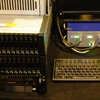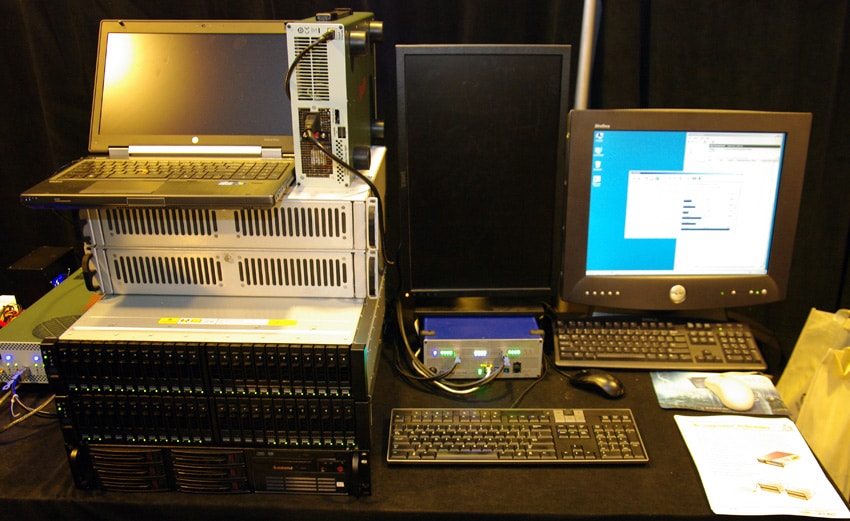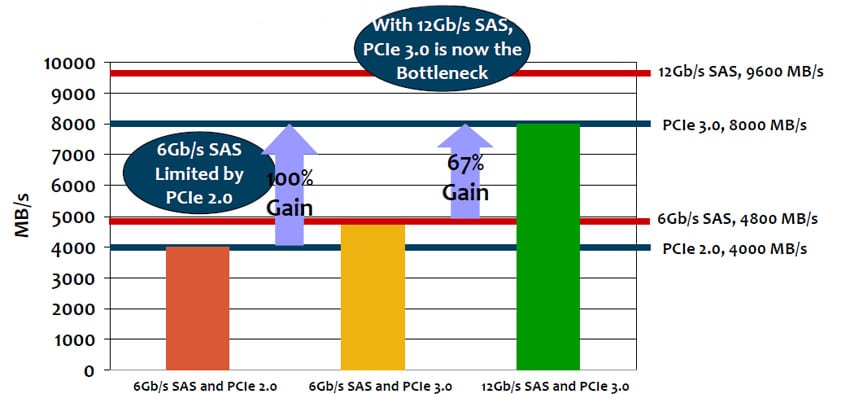 Industry adoption of PCIe 3.0 is driving development of a new generation of enterprise storage interfaces that can utilize the full bandwidth available from the new PCIe standard. At this year’s SCSI Trade Association (STA) Technology Showcase, sponsors including LSI, HGST, Intel, JDSU, LeCroy, PCM-Sierra, SanDisk, Seagate, SerialTek, Toshiba, Western Digital, and Xyratex were eager to demonstrate a variety of systems and hardware that push the theoretical transfer limits of PCIe 3.0 and illustrate how PCIe 3.0 can be used to enhance the performance of existing 6Gb/s SAS and SATA deployments.
Industry adoption of PCIe 3.0 is driving development of a new generation of enterprise storage interfaces that can utilize the full bandwidth available from the new PCIe standard. At this year’s SCSI Trade Association (STA) Technology Showcase, sponsors including LSI, HGST, Intel, JDSU, LeCroy, PCM-Sierra, SanDisk, Seagate, SerialTek, Toshiba, Western Digital, and Xyratex were eager to demonstrate a variety of systems and hardware that push the theoretical transfer limits of PCIe 3.0 and illustrate how PCIe 3.0 can be used to enhance the performance of existing 6Gb/s SAS and SATA deployments.
Industry adoption of PCIe 3.0 is driving development of a new generation of enterprise storage interfaces that can utilize the full bandwidth available from the new PCIe standard. At this year’s SCSI Trade Association (STA) Technology Showcase, sponsors including LSI, HGST, Intel, JDSU, LeCroy, PCM-Sierra, SanDisk, Seagate, SerialTek, Toshiba, Western Digital, and Xyratex were eager to demonstrate a variety of systems and hardware that push the theoretical transfer limits of PCIe 3.0 and illustrate how PCIe 3.0 can be used to enhance the performance of existing 6Gb/s SAS and SATA deployments.

New SAS storage infrastructures will increasingly adopt 12Gb/s interfaces, which allow storage systems to approach the performance potential of solid-state memory. 12Gb/s SAS hosts with 12Gb/s SSDs in an internal DAS configuration demonstrated the potential for a complete 12Gb/s SAS ecosystem to exceed 1M IOPs.

LSI also demonstrated "Store and Forward" SAS features with their DataBolt technology, which employ bandwidth aggregation to allow older 6Gb/s devices to perform similarly to native 12Gb/s technology. DataBolt allows a mixture of 3Gb/s and 6Gb/s SAS and SATA devices to double in performance by swapping in a SAS 12Gb/s expander and LSI DataBolt-enabled card.
